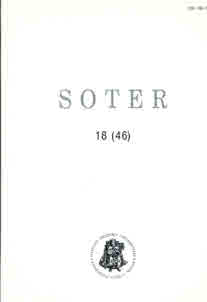Sakramentologijos atsinaujinimo tendencijos XX a. pirmoje pusėje
Tendencies of sacramental renewal in the first part of the 20th century
Author(s): Rimas SkinkaitisSubject(s): Christian Theology and Religion
Published by: Vytauto Didžiojo Universitetas
Keywords: slėpinys; simbolis; sakramentas; Velykinis Kristaus slėpinys; mystery; symbol; sacrament; Paschal Mystery of Christ;
Summary/Abstract: Liturgical renewal, born in Belgium, intensifield in Germany in the beginning of 20 th century, also evoked new tendencies in sacramentology. Odo Casel renews and re–interprets the theory of old mysteries as God’s saving interventions into the history of manking. Casel interprets a mystery not only as a hidden truth or reality, but as a salvational action of God, revealing himself. German theologian Odo Casel presents liturgy as God’s symbolic language in revealing his mysteries, where a symbol is understood not only as a meaningless sign, expressing concrete reality, but as a holder of this reality, as a different way of existing reality. Another theologian of the same time K. Adam, following the idea of the Benedictine, further develops the theology of the symbol and uses it in sacramentology, where the sacraments are understood as symbols, expressing the Pascal Mystery of Christ. Sacraments are the symbols, through which a man is submerged into the Pascal Mystery, and at the same time, with the incorporation to Christ himself, he becomes a participator of the divine life We can also trace new tendencies in Church Magisterium. Pope Pius XII develops the idea about the sacraments as ritual participation in the Paschal mystery of Christ, and he claims that through sacraments we experience a deep union with the Church as Christ’s Mystical Body and all the believers as members of this Body. The sacraments serve as a means of creating and nurturing between God and his people, and among the Christians themselves. The Pope’s documents show clear and courageous turn from purely juristic–institutional Church and its liturgical concept to theologically–missionary and pneumatological.
Journal: SOTER: religijos mokslo žurnalas
- Issue Year: 48/2006
- Issue No: 20
- Page Range: 39-51
- Page Count: 13
- Language: Lithuanian

